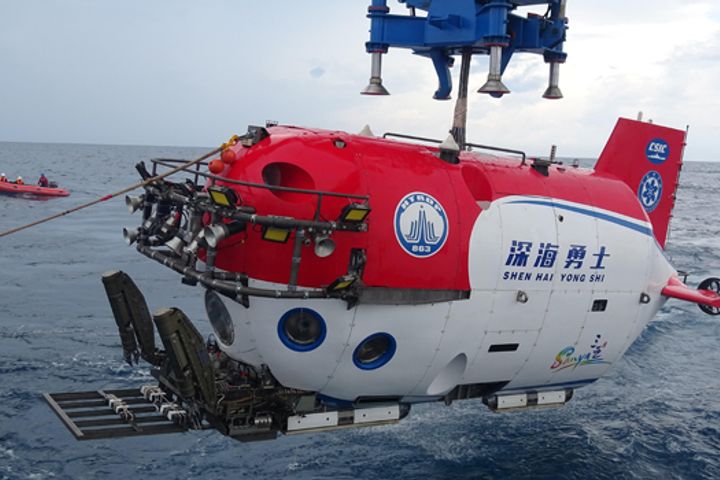 Chinese Manned Submersible Ends First Scientific Quest to Indian Ocean Hot Vents
Chinese Manned Submersible Ends First Scientific Quest to Indian Ocean Hot Vents(Yicai Global) March 11 -- Chinese manned submersible Shenhai Yongshi (Deep-Sea Warrior) has completed China's first deep-diving scientific research expedition exploring hydrothermal zones in the Southwest and Mid-Indian Ocean after a 121-day, 17, 000-nautical mile voyage.
It returned to Sanya in China's southernmost province of Hainan yesterday aboard its mother ship Tansuo I (Expedition I), state Xinhua News Agency reported.
The underwater craft made 62 dives in the hydrothermal areas of the Southwest and Mid-Indian Ocean in the very complex seafloor geological environments astride the Indian Ocean Ridge on this scientific research expedition led by the Institute of Deep-Sea Science and Engineering of the Chinese Academy of Sciences. It completed 25 descents in December alone, thus tying the record for China's manned diving trips made in a single month.
Deep-Sea Warrior obtained high-definition video footage of undersea hotspot activity, collected an abundance of hydrothermal fluid, sulfides, bedrock samples and specimens of vent fauna that will provide important basic data for in-depth research of the material cycle, evolution of life, and effects on the ecology and environment and other aspects of the super-heated seafloor fluid system.
The submersible also deployed and retrieved many seafloor monitoring devices, completed seabed testing of a domestically-made deep-sea imaging sonar and two robotic arms, verified the capabilities of high-precision underwater search and rescue tasks, and conducted deep-sea experiments, signaling that China's manned deep diving capability has come of age and reached internationally-advanced levels.
Deep-sea hydrothermal fluid is the hot aqueous solution released by submarine volcanoes along undersea ridges and fault lines. The water temperature around these 'black smokers' can reach 400 degrees centigrade. They are havens for rare animals and plants that exist nowhere else, freed from dependence on sunlight energy. The fluid they issue may represent the 'primordial soup' that spawned life on Earth and they therefore hold important clues for evolutionary biology.
Water from these lava-encrusted vents deposits masses of volatile matter and metallic ions and so they offer good prospects for exploitation of mineral resources, and areas around these fissures may be one thousand times more richly-endowed with ores than land-based formations, the Massachusetts, US-based Woods Hole Oceanographic Institution reports on its website.
Editor: Ben Armour